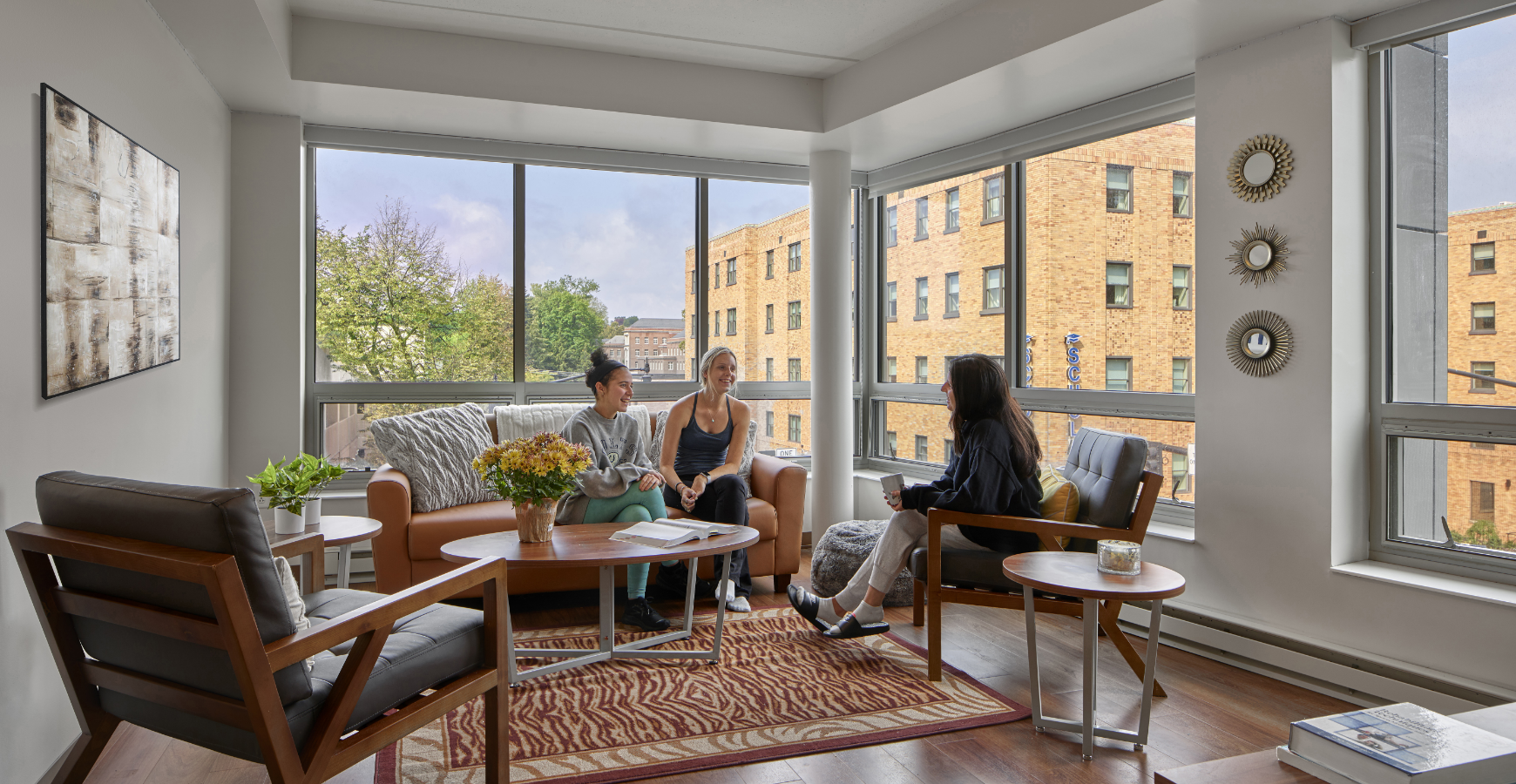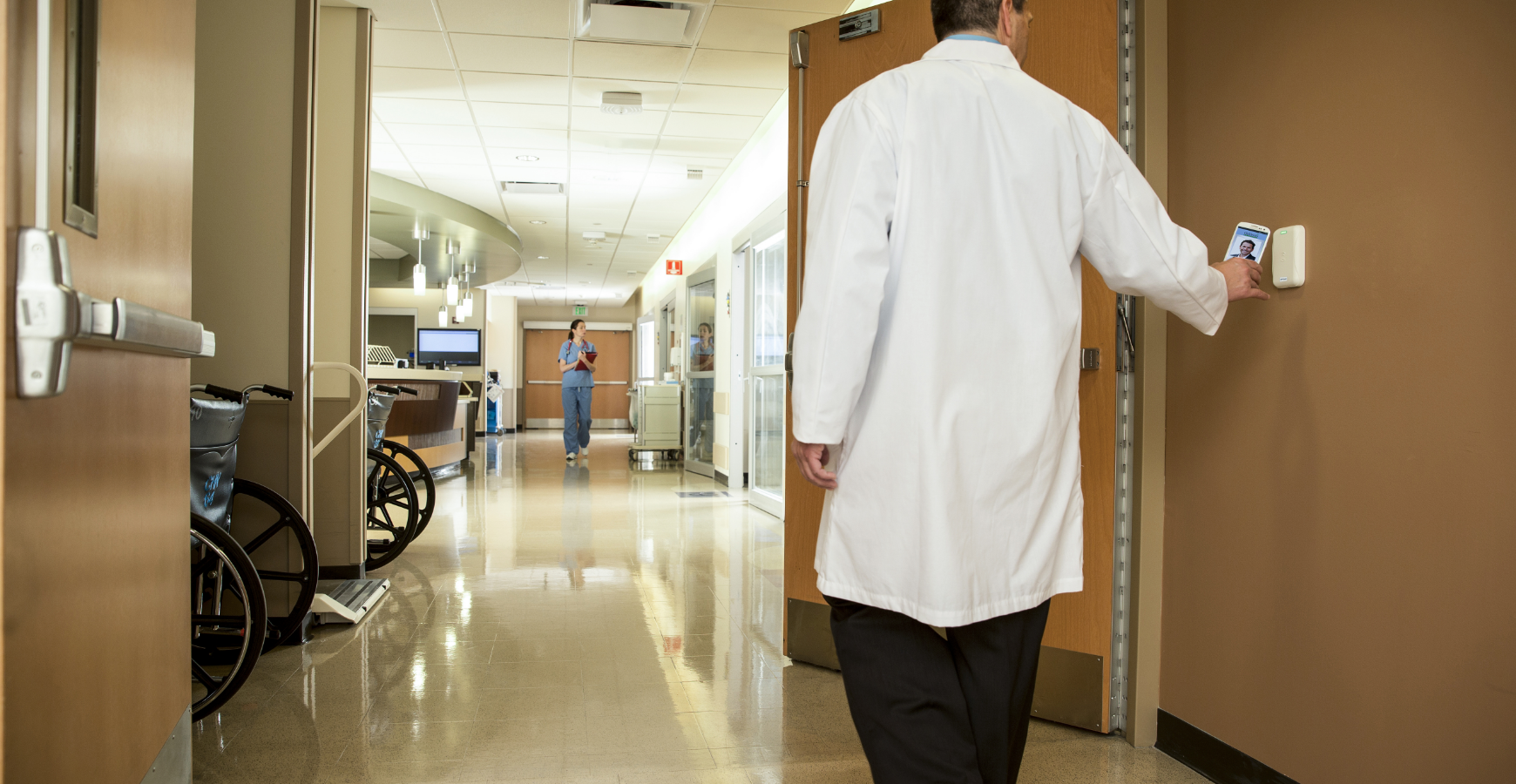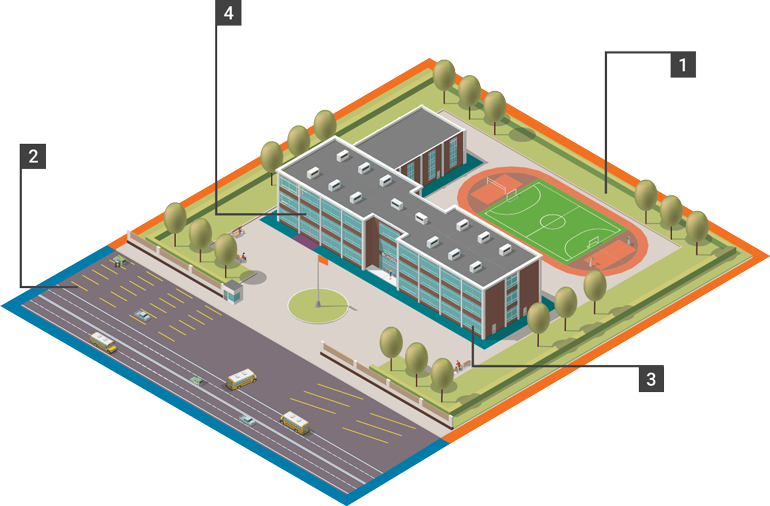Layers of Protection
Layered security has long been identified as a recommended practice for securing all types of buildings. This approach provides multiple security controls from the outside property line to the building perimeter to the classroom to protect students and staff. (PASS page 6, FED page 122)
1. Property perimeter
Perimeter security should deter or prevent those with criminal intent from entering the campus. Property perimeter barriers may include things like fencing, guard houses, shrubbery, sidewalks and lighting.
2. Parking lot
It is important to have a strategy for securing areas beyond the building itself. Exterior areas of focus could include parking lots, walkways, outdoor gathering areas, etc.
3. Building perimeter
When ensuring the security of the building, it is critical that all perimeter doors can be easily locked. All visitors should be funneled to a primary entrance point where a vestibule is in use.
4. Classroom security
Securing classrooms and other areas inside the school are a vital last line of defense if an intruder gains entry. Locks with recommended functions, visual indicators and training of students and staff are all vital components for securing classrooms.
 Featured ProductSchlage Credential Services deliver control, security and flexibility without limiting your options. From encryption keys to card tracking and custom artwork, our services help create an access control plan that fits today and grows with you tomorrow.
Featured ProductSchlage Credential Services deliver control, security and flexibility without limiting your options. From encryption keys to card tracking and custom artwork, our services help create an access control plan that fits today and grows with you tomorrow.






































